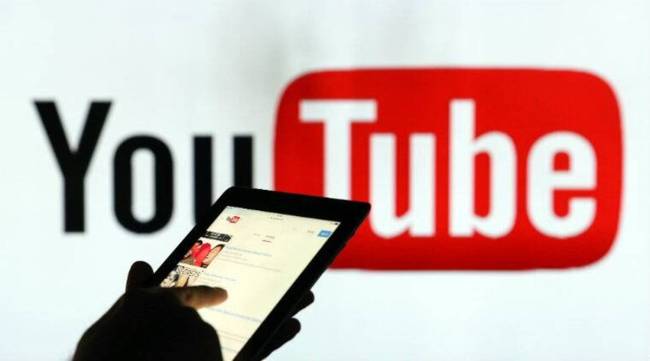Opinion Government blocks YouTube channels: I&B ministry’s take-down procedures lack transparency
Failure to publicly disclose blocking orders makes it challenging for courts and citizens to scrutinise the government’s contention that the content is unlawful
 Irrespective of the content hosted by the channels blocked by the Indian government, this instance highlights crucial gaps in India’s legal regime for blocking online content.(Representational/File Photo)
Irrespective of the content hosted by the channels blocked by the Indian government, this instance highlights crucial gaps in India’s legal regime for blocking online content.(Representational/File Photo) On August 18, the Ministry of Information & Broadcasting (MIB) announced that it had ordered the blocking of eight YouTube channels, one Facebook account and two Facebook posts which had a cumulative viewership of more than one billion. The Ministry has stated that the blocked accounts and channels were circulating fake news detrimental to communal harmony, public order, and India’s foreign relations. Irrespective of the content hosted by these channels, this instance highlights crucial gaps in India’s legal regime for blocking online content.
Section 69A of the IT Act empowers the government to block content where it is “necessary and expedient” to do so on specific grounds, including the security of the state, the sovereignty and integrity of India, and public order, among others. Under the 2021 Intermediaries Guidelines, the MIB has both non-emergency and emergency powers to direct online publishers or intermediaries to remove digital content. The non-emergency route involves an Inter-Departmental Committee; the Committee is empowered to recommend the blocking of content while adjudicating user grievances only after making reasonable efforts to identify content publishers and provide them with a pre-decisional hearing. During such a hearing, publishers can demonstrate why their content should not be blocked.
However, under the emergency route, the vital procedural safeguard of a pre-decisional hearing is dispensed with. In such cases, an authorised governmental officer can make a recommendation for content blocking directly to the Secretary, MIB, who in turn can issue blocking directions if they are satisfied that it is an emergency where no delay is acceptable, and the relevant content attracts any of the grounds enumerated under Section 69A of the IT Act.
Crucially, the term “emergency” is not defined under the IT Act or the 2021 Intermediaries Guidelines. Therefore, what constitutes an “emergency” is left to the subjective determination of the executive, subject to the grounds specified in the IT Act. Simply put, the MIB can dispense with the requirement to provide publishers with a hearing if the Secretary MIB makes a determination that there is an emergency justifying blocking public access to information.
The Ministry of Electronics and Information Technology (“MeitY”) has possessed similar blocking powers since 2009. Perhaps unsurprisingly, there are no recorded instances of MeitY offering individuals pre-decisional hearings even when blocking non-emergency content. While the MeitY has used this power to block unlawful speech such as content attracting terror offences, the power has also been exercised against a broader ambit of speech such as content reporting on and supporting the farmers’ agitation. This suggests that the MeitY may be excessively using its emergency powers to block content.
In July 2022, Twitter sued MeitY in the Karnataka High Court for issuing defective blocking orders under Section 69A of the IT Act. According to Twitter, the orders failed to adhere to the procedural requirement to give users a hearing and did not satisfy the grounds for blocking under the IT Act (security and integrity of India, public order, incitement, etc.). This raises crucial questions on adequate checks and balances around the exercise of blocking powers by the government.
To pass constitutional scrutiny, restrictions on free expression must also be proportionate. The MIB has chosen to block entire channels and accounts, as opposed to individual pieces of content. If a channel posts both lawful and unlawful content, blocking the entire channel results in lawful content being restricted. As per the Supreme Court’s Anuradha Bhasin ruling, for a restriction on free expression to be proportionate, it must be the “least restrictive measure”. In the present case, a lesser restrictive measure that may have been available to the MIB would have been to identify the specific pieces of content that were allegedly unlawful and only take those down, leaving the channels and any lawful content on them undisturbed. This highlights how channel and account bans are fundamentally disproportionate unless the entirety of the content associated with a channel or account is unlawful.
Since the promulgation of the 2021 Intermediaries Rules, MIB has exercised its emergency blocking power on at least five occasions. In each instance, the public has been informed about content blocking through press releases, but the blocking orders themselves have not been disclosed. Failure to publicly disclose blocking orders contributes to the opacity in the Ministry’s blocking processes and makes it challenging for courts and citizens to effectively scrutinise the government’s determination that the content is unlawful. The use of emergency powers that by-pass hearings to publishers not only infringes on their right to information, but also their right to access justice by challenging defective orders before constitutional courts.
In Anuradha Bhasin, the Supreme Court ruled that governments should publicise any orders that restrict the rights of individuals, and any claim by the government to confidentiality or secrecy would be evaluated by courts. This approach would facilitate much needed judicial scrutiny of government orders blocking online content. Such scrutiny would ensure that when the government blocks content, it does so in compliance with the IT Act and the Constitution, upholding not just free expression but also the rule of law.





